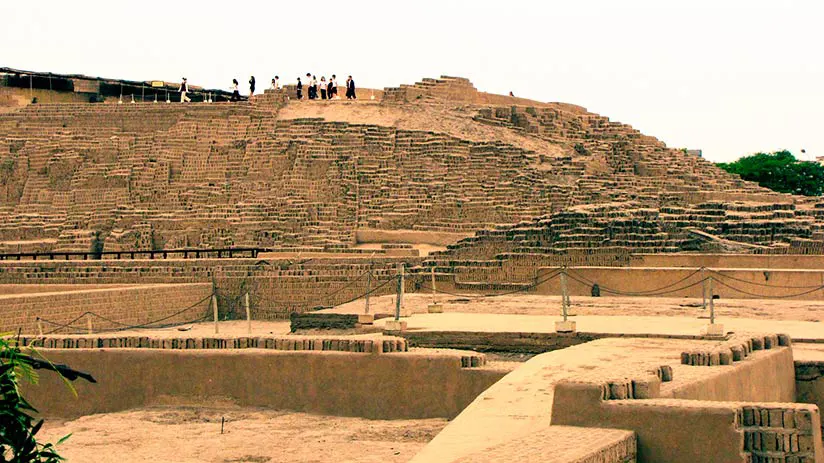The heart of the beautiful Peruvian capital lies a major archaeological site: Huaca Pucllana. It is a place to appreciate and marvel at. Every tour of the capital includes a guided or panoramic visit to this archaeological site.
Its location between modern buildings in Lima and renowned establishments forms one of the most significant contrasts between the contemporary and ancient worlds. If you are curious about this beautiful show, we want to help. We will explain why it is essential and where you can find it. We will share with Machu Travel Peru about this fantastic place. It would be best not to miss it on your trip to Lima.
Everything you need to know about the Huaca Pucllana Pyramid
Overview
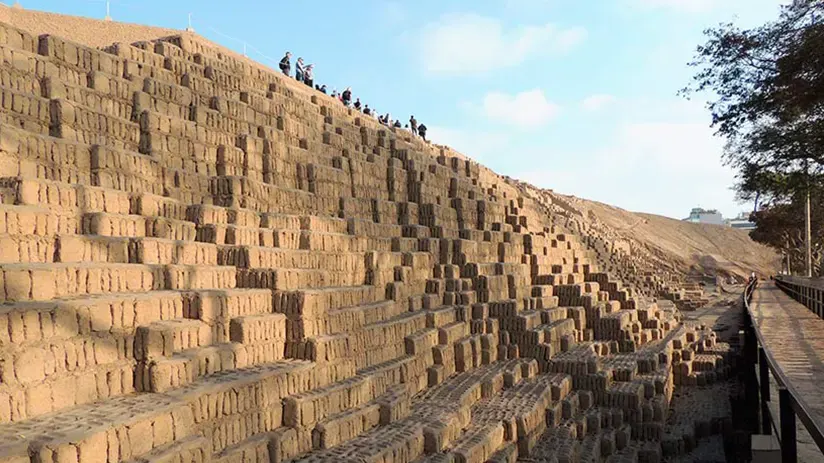
The Huaca Pucllana is an impressive 25-meter-high clay and adobe pyramid with 7 staggered levels. Members of the pre-Inca culture of Lima built it around 500 AD.
It is on the Peruvian coast, close to the Pacific Ocean. It is in the Miraflores district of Lima, Peru. People first used it as an administrative center for nearby irrigation. Later, it served as a ceremonial center and became a cemetery for pre-Inca cultures. The builders placed the courtyards north of the pyramid, covering 6 hectares. The site has an exhibition hall, a tourist circuit, and other attractions.
One of these is the Señor de los Unkus remains, which is one of Huaca Puclla’s most important discoveries. An excellent local restaurant also exists. All this creates the best excursion in Lima that you can take from Miraflores; we refer to the visit to this complex.
History
The history of Huaca Pucllana ruins has three key moments. Builders constructed it between 200 and 700 AD. We will develop these to continue allowing us to have a general view.
1. Lima Culture
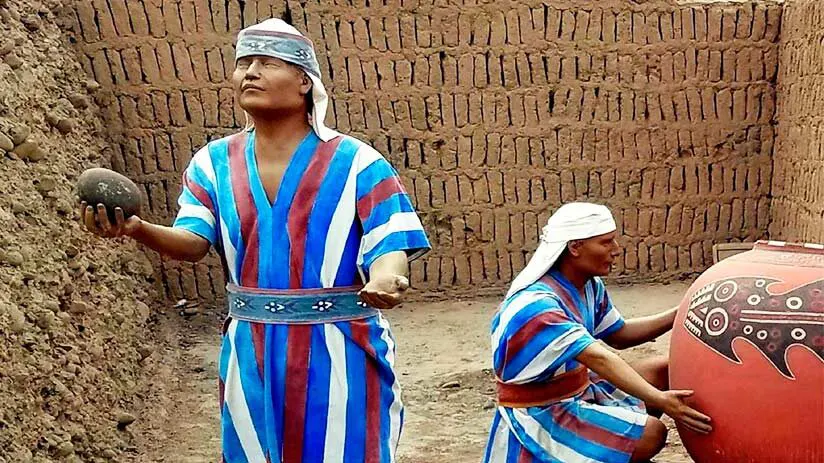
The Lima Culture built the Huaca Pucllana around 500 AD. This culture was a pre-Inca civilization between approximately 100 and 650 AD. The central coast of Peru had a dry climate. This culture adapted well and became known for its irrigation systems, aqueducts, pesca, and agriculture.
The builders of the Lima Culture used the bookcase technique, placing vertical adobe bricks with space between them. Likewise, the builders used trapezoidal structures, as in Machu Picchu, which allowed these structures to absorb tremors.
2. Wari culture
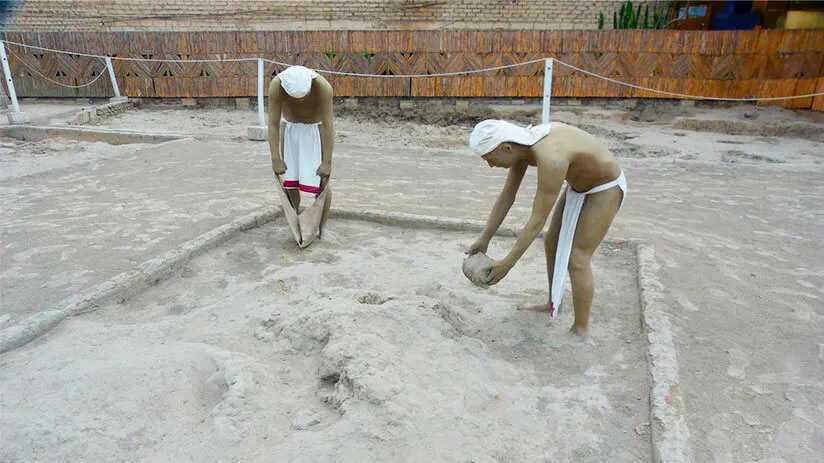
In the 6th and 7th centuries, the “Wari Culture” became the leading power in Ayacucho, southern Peru. They spread efficiently along much of the Peruvian central coast, forming alliances in their conquest.
Around 700 AD, the Lima culture stopped using the adobe and clay pyramids for ceremonies. This change happened before the Wari people arrived. They buried it, but later, the pre-Inca Andean culture unearthed it. They used the upper part as a burial place for the nobility.
3. Ychsma culture
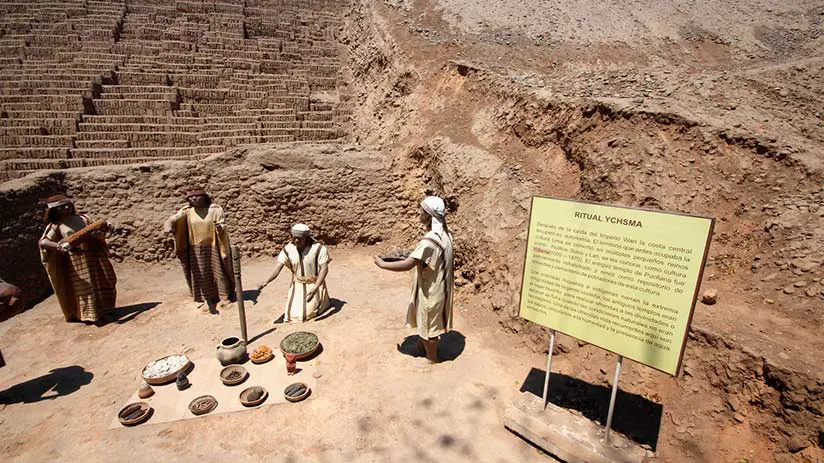
After the Wari culture, the culture settled around Huaca Pucllana was the Ychsma culture. Between 1000 and 1532 AD. Small groups settled along the Lurin and Rimac valleys. The few people surrounding the pyramid tried to restore it, perhaps trying to recover its former splendor. However, the deterioration was very advanced, and they could only recover the western slope of the complex.
The Ychsma people used the pyramid as a cemetery and offering place. They wanted to keep the same purpose the previous inhabitants had given it.
4. Spanish invaders
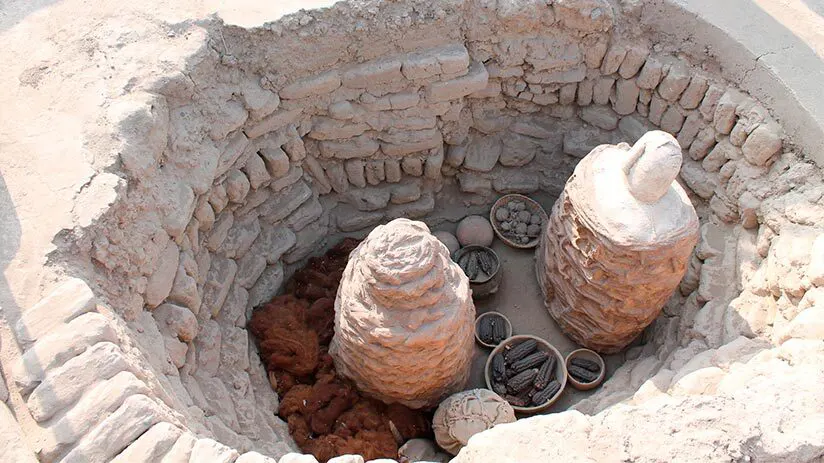
The Incas viewed the Huaca as a simple place of worship for their guardian gods. Consequently, they did not implement any reforms in Huaca.
Then, the Spanish took power when Francisco Pizarro founded the city of Lima. In this case, they saw there were no valuable remains like gold or silver. Since the Huaca was not important in pagan religion, they did not touch it.
5. Huaca Pucllana today
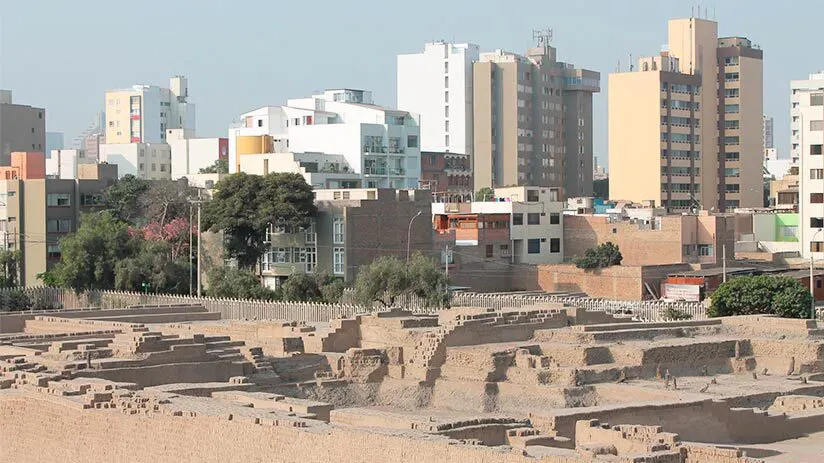
Previously, this place occupied a much larger space. Recent neglect and lack of interest in urbanization have led to abandonment in the area. This has allowed modern buildings made of fine materials to take over. As a result, people overlook important historical sites and smaller pyramids nearby.
The investigation started in 1981 when workers dug up and saved more areas, and urban development in the region stopped. Today, the Huaca complex has many tourist areas. There is a space for workshops, a restaurant with views of the ancient ruins, and a charming souvenir shop.
What to do
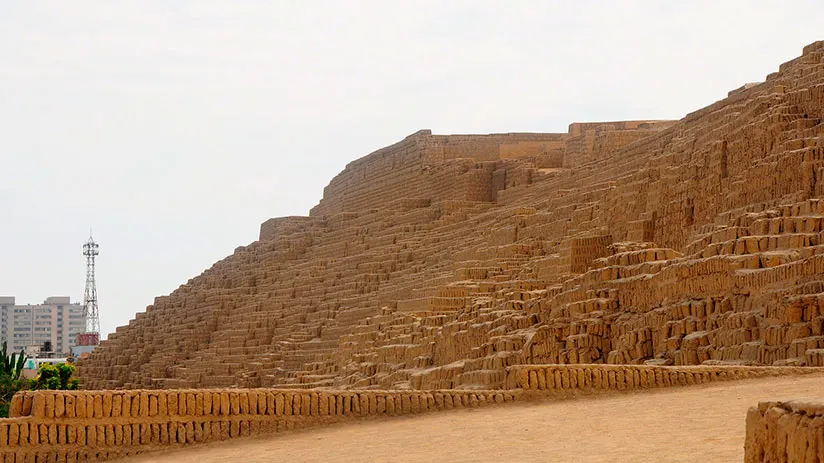
Visiting the Pucllana ruins is a must on your trip to Peru. However, if you are thinking about what activities to do, here are some excellent recommendations:
Explore the complex
This complex was separated by an extensive wall from north to south, dividing it into west and east areas. It is thought that the west side had a 25-meter pyramid. This area was used as a ceremonial and administrative center.
Instead, the eastern area contained warehouses, public squares for gatherings, and other buildings destined for production. We should also note that at the top of the pyramid, there is a truncated pyramid with 7 levels. Built using rectangular mud bricks.
Visit the Site Museum
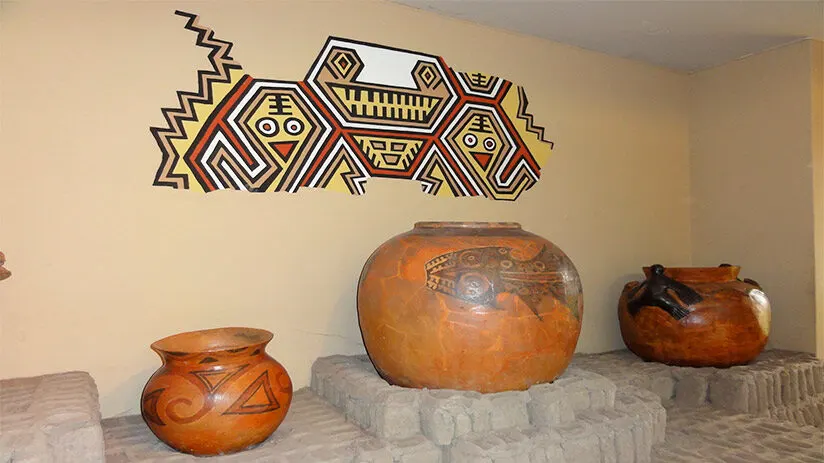
Inside the complex, visitors can take a museum tour. This tour displays various vessels, ceramics, and tools. The Lima culture and later cultures used these items. They can also learn about their lifestyles and ceremonies, in which they offered tribute to their gods. Moreover, visitors will enjoy a beautiful restaurant and a shop that sells Huaca crafts.
Culinary experience in the restaurant
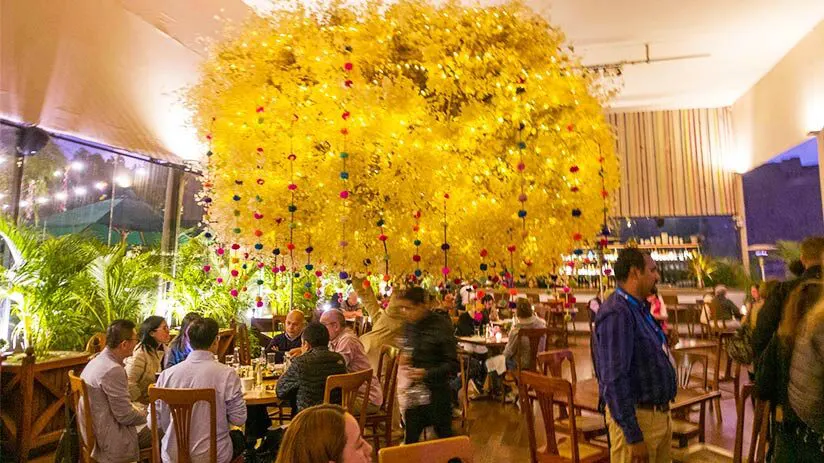
The exclusive Huaca Pucllana restaurant is a culinary adventure that complements your visit to the Huaca Pucllana. It has nothing to envy any five-fork restaurant.
Run by renowned chefs, its menu offers the best of Peruvian cuisine in different dishes such as aji de gallina (Peruvian chicken stew), lomo saltado (Beff stir-fry with rice), or the classic Ceviche (Pieces of fresh fish marinated in lemon juice and rocoto) among others. The prices are similar to those of other restaurants in Lima, and we recommend it.
Huaca Pucllana guided tour
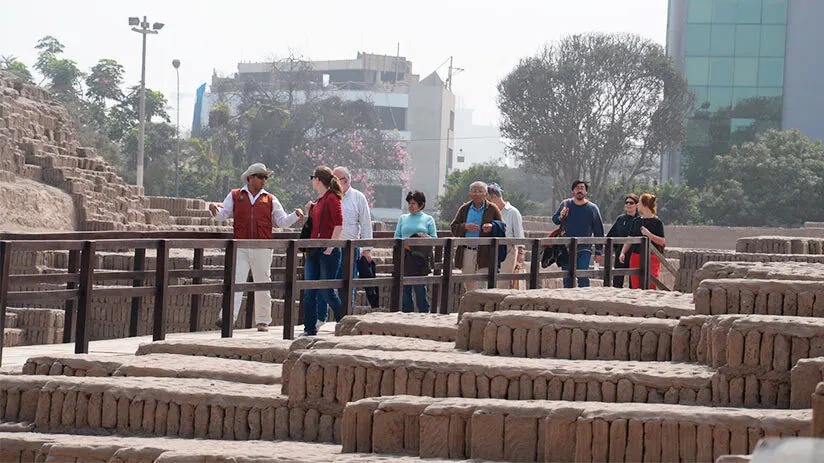
You can explore the pyramid and large walled rooms built with adobe bricks thousands of years old. All this tour takes place in the company of a tour guide.
Usually, these bricks have a trim level of deterioration, so restorers constantly work on their replacement. They even explain to visitors how the workers made the bricks. Fortunately, it rarely rains in the capital, which is one of the reasons this pyramid has remained standing.
One of the site’s main attractions is the different tombs discovered. Thanks to the archaeologists who continue exploring, they still find secrets in the area today. Don’t forget that the best time to visit Lima and the Huaca Pucllana is during the dry season, which runs from May to October. During these months, it rains less and the weather is warmer. This makes it more pleasant to visit the archaeological site.
Schedules and entrance prices
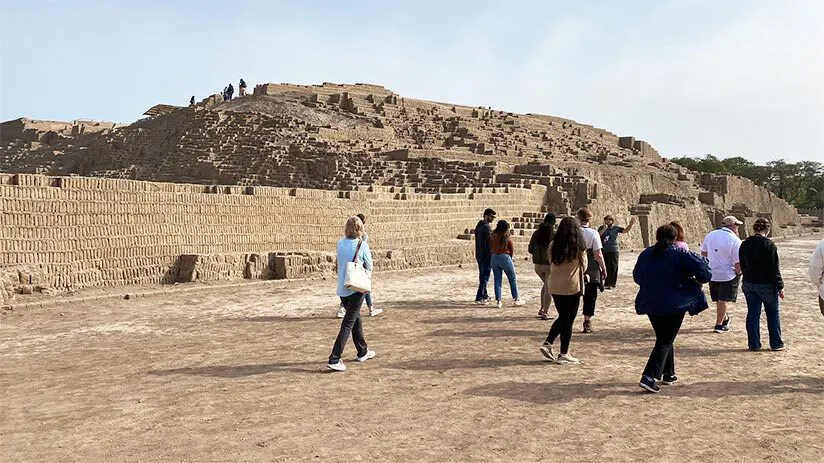
- It is open Mondays, Wednesdays, Fridays, Saturdays, and Sundays from 09:00 am to 16:15 pm.
- Closing holidays: January 1, Good Friday, May 1, July 28, December 25, and National Election Day.
- All visits are in groups and with preview booking in the following link.
- Each group can include a maximum of 20 people. If you are less than this number, you must wait for the group to reach 20 people. That is why someone makes a prior reservation.
- Despite being children or babies, they occupied a space in the group and joined the list of 20 people.
Entrance prices
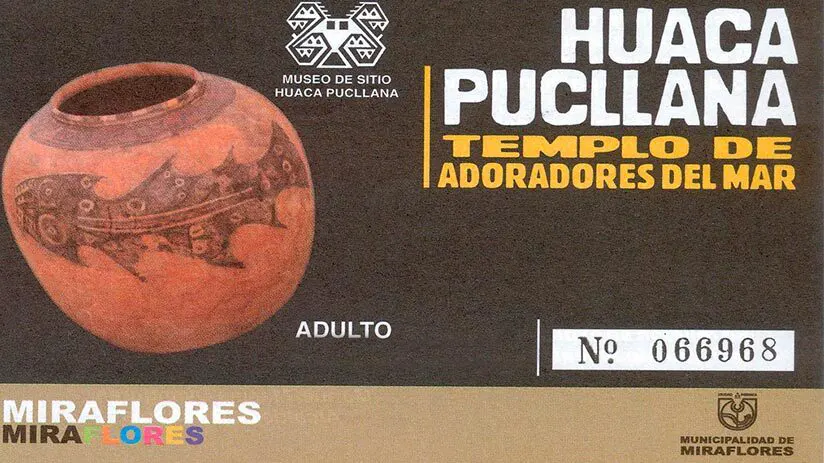
- General price: The general cost is S/ 15 or $4 per person. Children under 5 years old enter free.
- Reduced ticket: Those persons with disabilities, teachers, higher education students, and boys and girls from 5 to 12 years pay only S/ 7.50 or $2 per person. Of course, they will have to show a document to testify her/his condition to enter the complex.
“THE PYRAMID SHAPE IS SAID TO HOLD MANY SECRETS AND AMAZING PROPERTIES. ONE OF THEM IS A SENSE OF WONDER ”
We hope you feel inspired to visit one of the oldest archaeological sites in Lima. Machu Travel Peru is here to help you with your journey. Located in one of the city’s most touristic districts, you will not need to move much. This site is a must-see for anyone looking for the best things to do in Lima.
In addition, as you already know, it has a restaurant worth trying. You can check our Lima travel guide for more information or to explore. You can talk to our qualified advisers about our city tours. They will explain how to enjoy all that Peru offers. Our team of consultants will be happy to help you realize the trip of your dreams.
Peru has so much to offer, it can be hard to know where to start. With many years of experience in the tourism sector, Machu Travel Peru is happy to help with anything regarding your trip to Machu Picchu and any tours around it. Make your Machu Picchu experience an unforgettable one!
